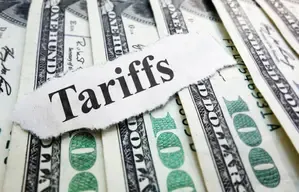Do US Tariffs on Products Really Justify India's Tariffs?

Synopsis
Key Takeaways
- US tariffs on products are significant and varied.
- India's tariffs are also high but not the highest globally.
- Key sectors in India are impacted by US tariffs.
- Opportunities exist through trade agreements like the India-UK Free Trade Agreement.
- Strategic measures are needed for India to navigate global trade challenges.
New Delhi, July 31 (NationPress) The remarks made by US President Donald Trump regarding India's tariffs being excessively high are misleading, as numerous countries, including the United States, impose substantial customs duties to shield their local industries. Data from the World Trade Organisation (WTO) indicates that the US imposes significant tariffs on various products: dairy items (200%), fruits and vegetables (132%), cereals and food preparations (196%), oilseeds, fats, and oils (164%), beverages and tobacco (350%), fish and fish products (35%), and minerals and metals (38%).
In comparison, India levies tariffs of 150% on whiskey and wines and 100-125% on automobiles.
Other countries also enforce high duties; for example, Japan imposes around 400% on rice, while Korea applies a staggering 887% on fruits and vegetables, and the US charges 350% on tobacco to protect their domestic markets.
While India's simple average tariff stands at 17%, the actual duties on major US imports are considerably lower, with the weighted average tariff on US exports to India falling below 5%. India has already begun increasing its oil and gas purchases from the US to mitigate the trade surplus and has proposed to enhance these imports.
Moreover, India has suggested substantial tariff reductions that could decrease average duties from 13% to 4% in exchange for exemptions from the US tariff increases that were implemented during the Trump administration.
Mahendra Patil, Founder and Managing Partner of MP Financial Advisory Services LLP, noted that the introduction of a 25% US tariff on Indian exports signifies a critical juncture for sectors such as textiles, gems and jewellery, auto components, and pharmaceuticals.
“For Indian industry, the immediate focus must be on diversifying markets, enhancing value addition, and establishing domestic buffers to better cope with the volatility of global trade,” he stated.
The recently finished India-UK Free Trade Agreement offers a timely opportunity by providing stable, tariff-free access to a vital market.
“This necessitates a more sophisticated and coordinated fiscal response, including targeted assistance for affected export sectors, expedited refund processes, and temporary boosts to incentive programs. India should leverage this moment not only to absorb immediate shocks but also to strategically reposition itself within global value chains,” Patil emphasized.
India continues to be a consumption-driven economy, with consumption contributing to 60% of the total GDP, while merchandise exports accounted for only 12% of GDP in FY24.









